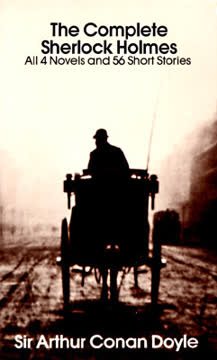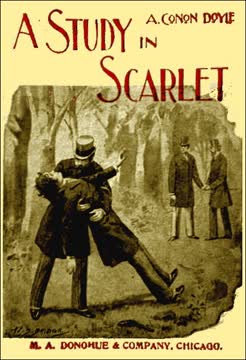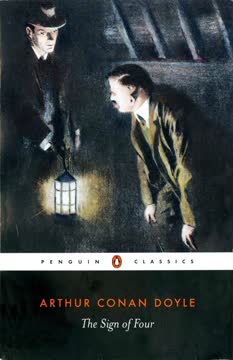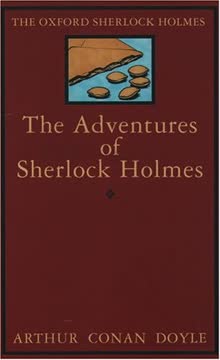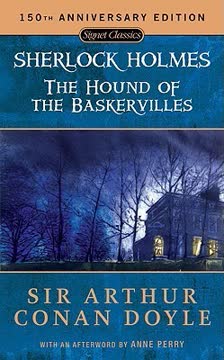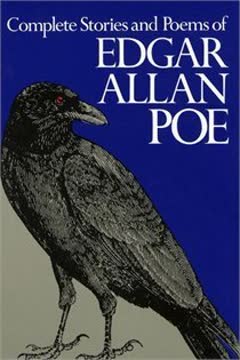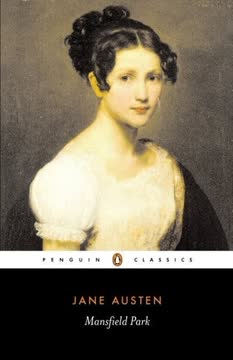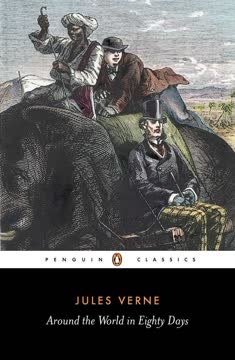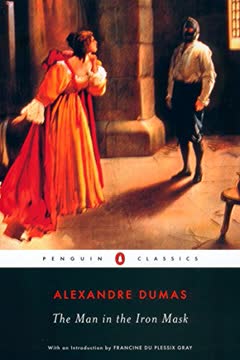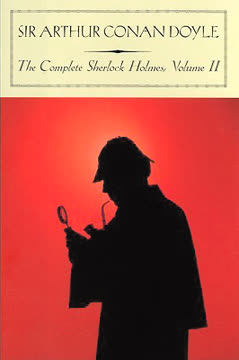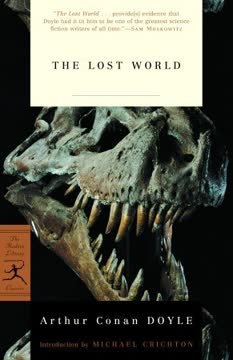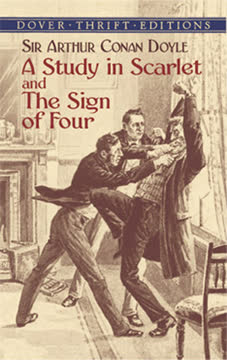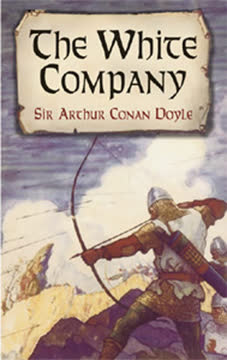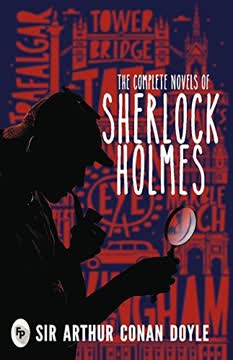Plot Summary
Watson's War Wounds and Woes
Dr. John Watson, a war-weary army doctor, returns to London from Afghanistan, grappling with health issues and financial instability. His life is aimless until a chance encounter with Stamford, an old acquaintance, offers a glimmer of hope. Stamford suggests a potential roommate, Sherlock Holmes, who might provide Watson with affordable lodgings and companionship, setting the stage for a life-changing partnership.
Meeting the Enigmatic Sherlock Holmes
Watson meets Sherlock Holmes, a consulting detective with extraordinary deductive skills, at a laboratory. Holmes astounds Watson by deducing his past from mere observation. Despite warnings of Holmes's eccentricities, Watson is drawn to his unique character and agrees to share lodgings at 221B Baker Street, marking the beginning of their legendary partnership.
The Lauriston Garden Mystery
Holmes and Watson investigate a bizarre murder at Lauriston Gardens, where a man lies dead with "RACHE" scrawled in blood on the wall. Holmes's keen observations reveal clues that elude official detectives, Gregson and Lestrade. This case showcases Holmes's deductive prowess and sets the stage for a thrilling investigation into a complex plot involving revenge and a hidden past.
The Agra Treasure's Empty Promise
After capturing Jonathan Small, Holmes and Watson open the much-coveted Agra treasure chest, only to find it empty. The treasure, which caused turmoil and tragedy, is gone, removing the barrier between Watson and Miss Morstan. This revelation allows them to express their true feelings, highlighting the theme that true happiness lies in love, not material wealth.
Jonathan Small's Confession
In custody, Jonathan Small recounts his story of betrayal and obsession with the Agra treasure. He reveals a pact with three Sikhs to share the treasure, only to be betrayed by Major Sholto. Small's narrative is filled with bitterness and a sense of injustice, as he explains his relentless pursuit of Sholto and the treasure, which ultimately brought him ruin.
The Secret of the Gloria Scott
Holmes recounts his first case involving his college friend Victor Trevor. Trevor's father, once a convict named James Armitage, is haunted by his past aboard the Gloria Scott, a ship carrying convicts. A mutiny led by Prendergast reveals a plot to seize the ship, shaping Trevor's father's future and the secrets he carries. This case marks Holmes's first step into detective work.
The Hound's Haunting Howl
At Baskerville Hall, Watson encounters the eerie atmosphere of the moor and the legend of a demonic hound. Locals speak of sightings, and Watson hears unsettling howls at night. The tension builds as the line between myth and reality blurs, with the hound's presence felt more keenly than ever, driving Holmes and Watson to uncover the truth behind the legend.
The Moor's Dark Secrets
Watson's reports to Holmes detail strange occurrences and the people connected to Baskerville Hall. Holmes's investigation reveals hidden motives and secrets among the moor's inhabitants. The mystery deepens as Holmes and Watson work to protect Sir Henry and solve the enigma of the hound, leading to a dramatic confrontation on the moor.
Holmes's Ingenious Deduction
Holmes's investigation uncovers the truth behind a murder and the motivations of those involved. His ability to deduce the identity of the murderer from the smallest clues highlights his unparalleled skills. The case concludes with a sense of justice served, as Holmes ensures that the efforts to exonerate the innocent are not in vain, demonstrating his compassion and understanding of human nature.
The Enigmatic Wisteria Lodge
John Scott Eccles's account of a bizarre night at Wisteria Lodge becomes crucial as Holmes and Watson delve into the mystery. The lodge, a hub for clandestine activities, reveals a complex web of deceit. Holmes's keen observations suggest that the murder of Garcia, a charming Spaniard, is linked to a larger scheme, involving international intrigue and a powerful figure manipulating events from the shadows.
The Sinister Sylvius Scheme
Count Negretto Sylvius, a notorious criminal, is embroiled in a plot to steal the Mazarin Stone, a priceless crown jewel. Holmes, aware of Sylvius's cunning, uses his mastery of disguise to gather intelligence. The theft sends shockwaves through London, and Holmes races against time to recover the jewel, ultimately outsmarting the criminals and ensuring justice is served.
The Mysterious Veiled Lodger
Mrs. Merrilow's reclusive lodger, Mrs. Ronder, wishes to confide a secret to Holmes. Her tragic story of love, betrayal, and survival unfolds, revealing a failed murder plot against her abusive husband. Holmes's empathy and discretion provide Mrs. Ronder with a sense of peace, allowing her to face her remaining days with dignity, highlighting the importance of compassion in the pursuit of justice.
Characters
Sherlock Holmes
Holmes is the central figure in the stories, using his keen observational skills and deductive reasoning to unravel complex mysteries. His ability to adapt and disguise himself is crucial in gathering information and outsmarting criminals. Holmes's empathy and understanding of human motives add depth to his character, as he navigates the complexities of each case.
Dr. John Watson
Watson provides steadfast support to Holmes, offering a sense of stability and companionship. His role as an observer and chronicler allows readers to appreciate Holmes's brilliance. Watson's empathy and moral compass complement Holmes's analytical mind, creating a balanced partnership that is central to their success.
Sir Henry Baskerville
Sir Henry is determined to claim his inheritance despite ominous warnings and strange occurrences. His courage and resolve are tested as he faces the legend of the hound and the secrets of the moor. Sir Henry's character highlights themes of bravery and the struggle against fear and superstition.
Jonathan Small
Small's life is consumed by his quest for the Agra treasure, leading to a path of crime and betrayal. His confession reveals a man driven by a sense of injustice and a desire for revenge against those who wronged him. Small's character underscores the destructive power of greed and obsession.
Count Negretto Sylvius
Sylvius is the mastermind behind the theft of the Mazarin Stone. His charm and intelligence make him a formidable adversary, but his arrogance ultimately leads to his downfall. Sylvius's interactions with Holmes reveal his desperation and fear of being caught, highlighting the complexity of the criminal network.
Mrs. Ronder
Once a circus performer, Mrs. Ronder's life was shattered by a lion attack that left her disfigured. Her story is one of love, betrayal, and survival, as she grapples with the consequences of a failed murder plot and the loss of her beauty and identity. Her character adds emotional depth to the narrative.
Professor Coram
Coram is a former Russian revolutionary with a hidden history of betrayal. His involvement in a murder case is central to the mystery, as his past actions set the stage for the crime. Coram's character adds intrigue and complexity to the narrative, as his secrets are gradually revealed.
John Scott Eccles
Eccles is a conventional Englishman whose unexpected involvement in the mystery stems from his naive acceptance of Garcia's invitation. His testimony provides crucial insights into the events at Wisteria Lodge, though he remains largely unaware of the deeper conspiracy at play.
Inspector Baynes
Baynes, a local inspector, collaborates with Holmes, bringing a systematic approach to the case. His discovery of key evidence complements Holmes's deductions, highlighting his competence and dedication to solving the mystery.
Miss Mary Morstan
Miss Morstan's presence in the story represents the possibility of happiness beyond material wealth. Her relationship with Watson blossoms once the treasure is out of the picture, emphasizing the value of love over riches.
Plot Devices
Deductive Reasoning
Holmes's use of deductive reasoning is central to his investigative process. By observing minute details and drawing logical conclusions, Holmes unravels complex cases that baffle others, showcasing his intellectual prowess.
The Baskerville Curse
The curse of the Baskerville family, involving a supernatural hound, creates an atmosphere of fear and mystery. It blurs the line between myth and reality, driving the investigation and the characters' actions, ultimately leading to the revelation of a human villain behind the plot.
Disguise and Deception
Holmes's ability to transform into different characters allows him to gather intelligence without arousing suspicion. This plot device highlights Holmes's ingenuity and dedication to solving cases, as he sacrifices comfort and safety to achieve his goals.
Cryptic Messages
Cryptic messages and notes serve as crucial clues in several cases, hinting at secret meetings and larger plots. Their hidden meanings challenge Holmes to decipher their significance, ultimately leading to the exposure of criminal networks and the resolution of mysteries.
Confession
Confessions from key characters serve as pivotal moments in the narratives, revealing the truth behind crimes and the motivations of those involved. These confessions add emotional depth to the stories, highlighting themes of love, betrayal, and justice.
Analysis
"The Complete Sherlock Holmes" by Arthur Conan Doyle is a masterful collection of detective stories that explore the complexities of human nature and the pursuit of justice. Through the character of Sherlock Holmes, Doyle delves into themes of logic versus emotion, the duality of human motives, and the thin line between good and evil. Holmes's unparalleled deductive skills and keen observations serve as a testament to the power of the human mind, while his empathy and understanding of human emotions add depth to his character. The stories highlight the importance of companionship and loyalty, as exemplified by the enduring partnership between Holmes and Watson. Doyle's work remains relevant today, offering timeless lessons on the value of critical thinking, the dangers of unchecked ambition, and the enduring quest for truth and justice.
Last updated:
FAQ
Synopsis & Basic Details
What is The Complete Sherlock Holmes about?
- Master of Deduction: The collection chronicles the extraordinary cases of Sherlock Holmes, a brilliant, eccentric consulting detective, and his loyal companion, Dr. John Watson. It delves into a wide array of crimes, from murders and thefts to blackmail and international espionage, all solved through Holmes's unparalleled powers of observation and logical deduction.
- Victorian London's Underbelly: Set primarily in late 19th and early 20th century London, the stories offer a vivid portrayal of the city's diverse social strata, from the highest echelons of aristocracy to the grimy depths of its criminal underworld. Each case exposes a different facet of human nature, often driven by greed, revenge, love, or desperation.
- The Human Element: Beyond the intricate plots, the collection explores the evolving friendship between Holmes and Watson, contrasting Holmes's cold, analytical mind with Watson's warmth and moral compass. It also touches upon the personal lives and motivations of victims and perpetrators, revealing the emotional complexities beneath the surface of each mystery.
Why should I read The Complete Sherlock Holmes?
- Intellectual Thrill: Readers should delve into The Complete Sherlock Holmes for the sheer intellectual pleasure of watching a master mind at work. Each story is a puzzle, inviting the reader to engage with Holmes's deductive process, making it an active and rewarding reading experience.
- Rich Character Development: Beyond the plots, the collection offers deep character studies, particularly of Holmes and Watson. Their evolving relationship, Holmes's eccentricities, and Watson's steadfast loyalty provide a compelling human core to the often-dark narratives, making them relatable and enduring.
- Historical & Cultural Immersion: The stories are a window into Victorian and Edwardian England, offering rich details of daily life, social norms, and technological advancements of the era. Arthur Conan Doyle's vivid descriptions and intricate world-building create an immersive experience that transports readers to a bygone age.
What is the background of The Complete Sherlock Holmes?
- Victorian Era Context: Arthur Conan Doyle's The Complete Sherlock Holmes is deeply embedded in the social, cultural, and technological landscape of late 19th and early 20th century Britain. The stories reflect the anxieties and advancements of the era, from the rise of industrialization and urban crime to the burgeoning fields of forensic science and psychology.
- Forensic Science Pioneer: Doyle, a trained physician, infused his narratives with a scientific rigor that was groundbreaking for its time. Holmes's methods, such as fingerprint analysis, toxicology, and trace evidence examination, were often cutting-edge or even ahead of contemporary police practices, influencing the development of real-world forensic techniques.
- Literary Influences: Doyle drew inspiration from various sources, including Edgar Allan Poe's C. Auguste Dupin for Holmes's deductive prowess, and his own medical professor, Joseph Bell, for Holmes's observational skills. The collection also subtly critiques societal issues like class disparities, colonial legacies (e.g., the Agra treasure in The Sign of Four), and the limitations of official institutions like Scotland Yard.
What are the most memorable quotes in The Complete Sherlock Holmes?
- "Elementary, my dear Watson.": Though not appearing in this exact form in the original texts, this iconic phrase encapsulates Holmes's effortless brilliance and his frequent gentle chiding of Watson's slower deductions. It defines his character as a master of logic, making complex problems seem simple once explained.
- "When you have eliminated the impossible, whatever remains, however improbable, must be the truth.": This is Holmes's fundamental principle of deductive reasoning, articulated in The Sign of Four and The Adventure of the Beryl Coronet. It highlights his systematic approach to problem-solving, emphasizing the power of logical elimination in uncovering hidden truths.
- "Data! Data! Data! I can't make bricks without clay.": From The Adventure of the Copper Beeches, this quote underscores Holmes's reliance on concrete facts and evidence. It reveals his scientific methodology, emphasizing that even his extraordinary intellect requires raw information to construct a solution, a key aspect of his investigative process.
What writing style, narrative choices, and literary techniques does Arthur Conan Doyle use?
- First-Person Narrative (Watson's Perspective): Doyle primarily employs Dr. Watson as the narrator, offering a limited but intimate perspective. This choice allows readers to experience Holmes's brilliance through the eyes of an admiring, yet often baffled, observer, enhancing the sense of wonder and making Holmes's deductions more impactful when revealed.
- Emphasis on Deduction and Observation: Doyle's writing style is characterized by its meticulous attention to detail and logical progression. He uses vivid descriptions of clues and crime scenes, then systematically unpacks Holmes's thought process, often withholding the full explanation until the climax to build suspense and showcase Holmes's intellectual superiority.
- Gothic and Victorian Atmosphere: Doyle masterfully uses descriptive language to create a distinct atmosphere, blending elements of Victorian realism with touches of Gothic mystery. Descriptions of foggy London streets, isolated country estates, and sinister characters contribute to the pervasive sense of intrigue and danger, drawing readers into the world of Sherlock Holmes.
Hidden Details & Subtle Connections
What are some minor details that add significant meaning?
- Watson's War Wound as a Barometer: In The Sign of Four, Watson's old Jezail bullet wound from Afghanistan aches with changes in weather. This seemingly minor detail not only grounds Watson in a tangible past but also subtly foreshadows the recurring theme of past traumas influencing present events, particularly in cases like Jonathan Small's.
- Holmes's Violin as an Emotional Outlet: Beyond being a hobby, Holmes's violin playing, especially his "sonorous and melancholy" improvisations in A Study in Scarlet, serves as a subtle indicator of his internal state. It's a non-verbal expression of his deep thought or emotional turmoil, a rare glimpse into the inner life of an otherwise emotionally detached character.
- The "K.K.K." Initials in The Five Orange Pips: The recurring initials, initially dismissed as a prank, are a crucial historical detail. They directly link the seemingly disparate deaths to the Ku Klux Klan, a real-world American terrorist organization, highlighting the far-reaching consequences of past injustices and the global scope of Holmes's cases.
What are some subtle foreshadowing and callbacks?
- The "Brain-Attic" Metaphor: In A Study in Scarlet, Holmes describes his mind as a "little empty attic" to be stocked only with useful knowledge. This metaphor subtly foreshadows his later struggles with idleness and drug use (The Sign of Four), implying that without constant intellectual stimulation, his "attic" becomes cluttered or falls into disuse, leading to negative consequences.
- The Recurring "Rache" Motif: The word "RACHE" scrawled in blood in A Study in Scarlet is initially misinterpreted by Lestrade as an unfinished name. Holmes's immediate correction to "revenge" (German for 'Rache') not only showcases his linguistic knowledge but also foreshadows the central theme of vengeance that drives Jonathan Small's entire narrative, linking the two parts of the novel.
- The Unseen Hand of Moriarty: Even before his formal introduction in The Final Problem, Professor Moriarty is subtly foreshadowed as a pervasive, organizing force behind various crimes. Holmes's casual remarks about a "great malignant brain" or a "deep organising power" hint at a formidable, unseen adversary, building anticipation for his eventual reveal as Holmes's intellectual equal.
What are some unexpected character connections?
- Dr. Watson's Unacknowledged Deductive Skills: While often portrayed as Holmes's foil, Watson occasionally demonstrates surprising flashes of deductive insight, which Holmes sometimes acknowledges, albeit with a touch of amusement. For instance, in The Hound of the Baskervilles, Watson's observation about the dog's teeth marks on the stick, though initially dismissed, later proves crucial to Holmes's understanding of the hound's nature.
- The Sympathetic Criminals: Characters like Jonathan Small (The Sign of Four) and Captain Crocker (The Abbey Grange) are presented not as purely evil, but as men driven by profound injustices or desperate circumstances. Their detailed confessions reveal a complex moral landscape, challenging the reader's initial judgment and blurring the lines between villain and victim.
- Holmes's Hidden Emotional Depth: Despite his self-proclaimed "cold, precise, and admirably balanced mind," Holmes occasionally reveals unexpected emotional responses. His genuine concern for Miss Mary Morstan's welfare in The Sign of Four, or his rare fits of laughter and frustration, offer glimpses of the human beneath the calculating machine, suggesting a deeper, often suppressed, emotional life.
Who are the most significant supporting characters?
- Mycroft Holmes, the Government's Brain: Sherlock's elder brother, Mycroft, is introduced as possessing even greater deductive powers but lacking the drive for practical application. His role in The Greek Interpreter and The Bruce-Partington Plans highlights a fascinating contrast to Sherlock, serving as a "human book of reference" and a subtle reminder that intellect alone is not enough without action.
- Inspector Lestrade, the Tenacious Bulldog: Though often outwitted by Holmes, Lestrade's persistence and dedication to duty are consistently portrayed. His recurring presence across multiple stories, from A Study in Scarlet to The Six Napoleons, establishes him as a reliable, if unimaginative, force of law, providing a grounded counterpoint to Holmes's flamboyant genius.
- Mrs. Hudson, the Long-Suffering Landlady: More than just a background figure, Mrs. Hudson's quiet presence and occasional exasperation offer a domestic anchor to Holmes's chaotic life. Her observations, though often dismissed by Holmes, sometimes provide subtle insights into his character and habits, humanizing the otherwise detached detective.
Psychological, Emotional, & Relational Analysis
What are some unspoken motivations of the characters?
- Holmes's Addiction to Intellectual Stimulation: Beyond solving crimes for justice, Holmes is driven by an almost pathological need for mental challenge. His cocaine use in The Sign of Four is a stark manifestation of his "rebellion at stagnation," revealing a deep-seated fear of boredom and a constant craving for problems to prevent his mind from "rusting." This unspoken motivation underlies much of his engagement with even the most trivial cases.
- Watson's Quest for Purpose and Identity: Watson's initial "comfortless, meaningless existence" after his war service in A Study in Scarlet reveals a profound need for purpose. His decision to chronicle Holmes's cases is not just about friendship but a subconscious attempt to find meaning and a new identity through association with greatness, filling the void left by his military career.
- Jonathan Small's Twisted Sense of Justice: While Small explicitly states his desire for revenge in The Sign of Four, his relentless pursuit over decades, even after the original wrongdoers are dead, suggests a deeper, almost obsessive need to rectify a perceived cosmic injustice. His actions are fueled not just by personal loss but by a rigid, self-righteous interpretation of "fairness" that justifies extreme violence.
What psychological complexities do the characters exhibit?
- The Duality of Holmes's Nature: Holmes frequently oscillates between intense intellectual activity and profound lethargy, a psychological complexity that Watson often observes. This "dual nature" (as described in The Red-Headed League) suggests a mind that, when not fully engaged, turns inward, sometimes leading to self-medication. It highlights the immense mental energy Holmes expends and the psychological cost of his genius.
- The Burden of Secrecy and Guilt: Many characters, like John Ferrier in A Study in Scarlet or the various figures in The Hound of the Baskervilles, carry deep secrets that manifest as psychological strain. Ferrier's constant fear and eventual breakdown under the pressure of the Danite Band illustrate how hidden pasts can corrode the present, leading to paranoia and tragic ends.
- The Allure and Danger of Obsession: Several characters demonstrate the destructive power of obsession. Jonathan Small's lifelong pursuit of the Agra treasure, or Dr. Grimesby Roylott's maniacal control over his stepdaughters in The Speckled Band, showcase how single-minded desires can warp morality and lead to extreme cruelty, revealing the dark side of human fixation.
What are the major emotional turning points?
- Watson's Acceptance of Holmes's Eccentricity: In A Study in Scarlet, Watson's initial skepticism and mild annoyance at Holmes's peculiarities gradually transform into admiration and deep loyalty. The moment Holmes deduces Watson's Afghan past, and later when he explains his "brain-attic" theory, marks a turning point where Watson fully embraces his role as chronicler and companion, solidifying their unique bond.
- Mary Morstan's Disappointment and Relief: The opening of the empty Agra treasure chest in The Sign of Four is a pivotal emotional moment for Miss Morstan. Her initial disappointment at the loss of wealth quickly gives way to profound relief, as it removes the "golden barrier" between her and Watson, allowing their love to blossom. This highlights the theme that true happiness is not found in material possessions.
- Sir Henry Baskerville's Confrontation with the Hound: The climax of The Hound of the Baskervilles, where Sir Henry faces the phosphorescent hound on the moor, is a major emotional turning point. It forces him to confront the terrifying legend head-on, transforming his initial skepticism into raw terror, and ultimately solidifying his resolve to break the family curse.
How do relationship dynamics evolve?
- Holmes and Watson: From Acquaintances to Indispensable Partners: Their relationship evolves from a pragmatic lodging arrangement in A Study in Scarlet to a deep, almost familial bond. Watson's role shifts from mere observer to active participant and confidant, with Holmes increasingly relying on his presence for both practical assistance and emotional grounding, as seen in Holmes's rare expressions of gratitude and concern.
- The Complexities of Familial Bonds: The stories frequently explore strained or corrupted family relationships. In The Hound of the Baskervilles, the Stapleton siblings' true relationship (husband and wife) and their manipulation of Sir Henry reveal a twisted familial dynamic driven by greed. Similarly, the Roylott family in The Speckled Band showcases extreme paternal tyranny and its deadly consequences.
- Love as a Catalyst for Action and Deception: Love, in its various forms, often drives the plot and character actions. Mary Morstan and Watson's burgeoning romance is contrasted with the destructive, obsessive love of Jonathan Small for Lucy Ferrier. In The Copper Beeches, Violet Hunter's loyalty to her fiancé influences her decisions, while in A Scandal in Bohemia, Irene Adler's love for Godfrey Norton ultimately thwarts the King's plans, demonstrating love's power to both inspire and complicate.
Interpretation & Debate
Which parts of the story remain ambiguous or open-ended?
- The True Nature of Holmes's Drug Use: While Watson explicitly details Holmes's cocaine use in The Sign of Four, the long-term effects and the full extent of his addiction are left somewhat ambiguous. Readers are left to ponder whether it's a controlled habit for intellectual stimulation or a deeper struggle, adding a layer of complexity to his character.
- The Fate of Professor Moriarty's Network: In The Final Problem, Holmes believes he has dismantled Moriarty's entire criminal organization. However, the epilogue of The Valley of Fear suggests that elements of the network, and Moriarty's influence, might persist, leaving open the question of whether Holmes truly eradicated the "Napoleon of crime" or merely disrupted a hydra-headed entity.
- The Unseen Watcher on the Moor in The Hound of the Baskervilles: Watson repeatedly observes a mysterious figure on the moor, which Holmes later reveals to be himself. However, the initial ambiguity and Watson's fear-driven interpretations leave a lingering question about the nature of observation and the subjective experience of terror, even after the truth is revealed.
What are some debatable, controversial scenes or moments in The Complete Sherlock Holmes?
- Holmes's Feigned Death at Reichenbach Falls: In The Final Problem, Holmes fakes his death to escape Moriarty, a decision that deeply traumatizes Watson and the reading public. This act is controversial for its emotional manipulation of Watson and the ethical implications of deceiving a close friend, raising questions about Holmes's priorities and the sacrifices he demands for his work.
- The Resolution of The Blue Carbuncle: Holmes allows the thief, James Ryder, to escape justice, arguing that sending him to prison would make him a "gaol-bird for life" and that it is "the season of forgiveness." This decision sparks debate about Holmes's role as a private detective versus a law enforcer, and whether his personal moral compass should override legal consequences.
- The Treatment of Women by Holmes: Holmes's often dismissive or objectifying remarks about women (e.g., "Women are never to be entirely trusted,--not the best of them" in The Sign of Four) can be seen as controversial. While he shows respect for Irene Adler, his general attitude reflects Victorian societal biases, prompting discussions about the character's flaws and the era's limitations.
The Complete Sherlock Holmes Ending Explained: How It Ends & What It Means
- The "Final Problem" and Holmes's Return: The original "ending" in The Final Problem sees Holmes and Moriarty plunge to their deaths at Reichenbach Falls. This was intended by Doyle to conclude Holmes's career. However, immense public outcry led to Holmes's miraculous return in The Adventure of the Empty House, where he explains he faked his death to dismantle Moriarty's remaining network and escape other enemies. This narrative choice highlights the character's enduring popularity and the author's responsiveness to his audience.
- Holmes's Retirement to Bee-Farming: The collection ultimately concludes with Holmes's retirement to a small farm on the Sussex Downs, where he dedicates himself to bee-farming and philosophical contemplation, as detailed in His Last Bow. This ending signifies a shift from active crime-solving to a more reflective, academic life, suggesting that even the most brilliant minds eventually seek peace and a different kind of intellectual pursuit. It represents a culmination of his career, having achieved his ultimate goal of ridding society of its greatest criminal threats.
- Watson's Enduring Legacy: Watson's role as Holmes's chronicler is central to the collection's enduring legacy. His final words in His Last Bow and other stories emphasize his commitment to preserving Holmes's adventures for posterity, ensuring that the detective's methods and triumphs are not forgotten. This highlights the importance of storytelling and the lasting impact of their partnership, even after Holmes's active career concludes.
Review Summary
The Complete Sherlock Holmes is widely praised as a masterpiece of detective fiction. Readers appreciate the complex mysteries, logical deductions, and enduring characters of Holmes and Watson. Many find the stories atmospheric and immersive, though some note repetitive elements. The novels are generally preferred over the short stories. Fans enjoy rereading the collection multiple times, finding new details with each revisit. While some criticize dated aspects, most consider it a timeless classic that has significantly influenced the mystery genre and popular culture.
Sherlock Holmes Series
Similar Books
Download PDF
Download EPUB
.epub digital book format is ideal for reading ebooks on phones, tablets, and e-readers.
